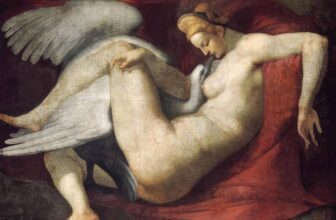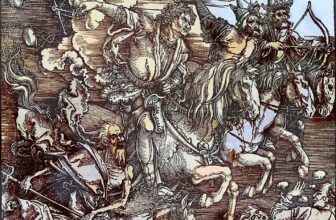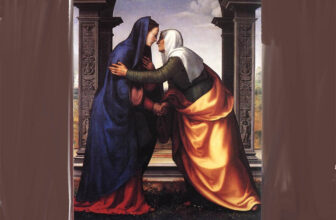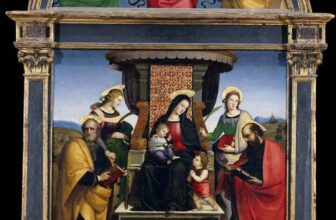Meaning of Portia and Brutus Painting
A Story of Meaning, Symbolism, and Human Struggle
| Invest in Hidden Masterpiece: Rare Antique Oil Paintings For Sale. Limited Originals Available 💰😊 Are you looking for authentic hidden masterpiece? Explore old master antique oil paintings from the Renaissance and Baroque eras. From 16th-century portraits to 18th-century landscapes. Authenticity guaranteed, Old Master antique oil paintings for sale. Shop Now! 🎨 Renaissance And Baroque Art Landscape Antique Paintings Old Master Portrait Paintings |
In the broad tapestry of Renaissance art, there are moments where myth, history, and morality intersect. One such moment is crystallized in the extraordinary Portia and Brutus paintings by the Ferrarese master Ercole de’ Roberti (1451–1496). These paintings, now housed in the National Gallery in London, are small in size but monumental in meaning, carrying the weight of Roman stoicism, human tragedy, and Renaissance intellectual culture.
At first glance, the viewer is drawn to the almost unsettling intensity of the figures: Brutus, the stern Roman statesman, and Portia, his devoted but tormented wife. But behind this intensity lies a story not only of personal sacrifice but also of political virtue, loyalty, and the fragility of human resolve. To understand what de’ Roberti captured, we must journey into the history of the Roman Republic, the intellectual environment of Renaissance Ferrara, and the painter’s own expressive artistic style.
This essay will explore the Portia and Brutus paintings in depth, how and why they were painted, what they represent, the symbolism embedded within them, and what type of art they are. Along the way, we will uncover what is “happening” in the scenes themselves and why these small panels continue to resonate across centuries.
The Painter: Ercole de’ Roberti and His World
Ercole de’ Roberti was born around 1451 in Ferrara, a vibrant cultural hub under the patronage of the Este family. Though his career was tragically short, he died before reaching fifty, he left behind some of the most emotionally charged and intellectually ambitious paintings of the Italian Renaissance.
Roberti was a master of expression, unlike many of his contemporaries who emphasized serene harmony. His figures often vibrate with psychological intensity, their faces and gestures revealing a spectrum of human emotions. He combined sharp linear precision, inherited from his training with Cosmè Tura, with an almost modern sensitivity to human psychology.
The Portia and Brutus paintings are part of a larger series of small panels painted for the Studiolo of Eleanor of Aragon, wife of Duke Ercole I d’Este of Ferrara. A studiolo was a private study, a place for contemplation and display of art, literature, and learning. Here, patrons often commissioned scenes from history, mythology, or literature that reflected their values and intellect.
Thus, the Portia and Brutus paintings were never meant as mere decoration. They were intellectual statements, moral exempla, and personal mirrors for Eleanor’s contemplation.
The Story of Brutus and Portia
To understand the paintings, one must return to ancient Roman history, particularly as recorded by Plutarch in his Lives.
Marcus Junius Brutus is remembered as one of the chief conspirators in the assassination of Julius Caesar in 44 BCE. For Romans and Renaissance humanists alike, Brutus symbolized republican virtue, a man who sacrificed personal loyalty for the survival of liberty.
Portia Catonis, his wife and the daughter of the famed Stoic philosopher Cato the Younger, represents equal measure of courage. Ancient accounts describe her testing her endurance by wounding herself in the thigh to prove she could bear Brutus’s secrets. Later, after Brutus’s defeat at the Battle of Philippi, she took her own life, allegedly swallowing hot coals.
In both figures, Renaissance audiences saw a mirror of the Stoic ideal: unwavering commitment to principle, even at the cost of one’s own life.
What is Happening in Portia and Brutus Painting?
De’ Roberti painted Brutus and Portia in two separate panels, though they were conceived as complementary.
Brutus Panel:
Brutus is shown in an interior, seated but restless. His face is marked by inner torment, his posture tense, his gaze troubled. This is not the heroic Brutus of Roman marble, but a man grappling with an unbearable moral decision. His surroundings suggest domestic intimacy, yet the weight of political destiny overshadows him.Portia Panel:
Portia is depicted in an equally charged moment. She too is indoors, her face contorted with physical and emotional strain. According to many interpretations, Roberti is showing her at the very moment of self-inflicted wounding, proof of her fortitude. Her attendants surround her in alarm, highlighting the contrast between ordinary human fear and her extraordinary stoicism.
Thus, the two panels capture not glory or triumph, but the cost of virtue. Roberti invites viewers not to admire stoicism from afar but to feel its pain directly through the expressive bodies and faces of Brutus and Portia.
Portia and Brutus Symbolism and Meaning
The symbolism in the Portia and Brutus paintings is layered, combining Roman history with Renaissance values:
Stoic Courage: Portia’s act of wounding herself represents mental strength over bodily suffering, a core Stoic belief admired by Renaissance humanists.
Marital Partnership in Virtue: Brutus and Portia are paired as equals in moral fortitude. This was an unusual Renaissance theme, emphasizing the intellectual and ethical dignity of women. Eleanor of Aragon may have identified personally with Portia as a woman of learning and moral strength.
The Republic vs. Tyranny: Brutus symbolizes resistance to tyranny and sacrifice for freedom. His presence in the studiolo aligned with the Este court’s own political ideals of justice and governance.
Domestic Interiors: Unlike Roman reliefs or triumphal statues, Roberti places his subjects in intimate spaces. This choice suggests that the greatest moral struggles happen not on battlefields, but in private hearts and homes.
Expressive Faces and Gestures: Roberti’s art pushes symbolism through psychology. The anguish on Brutus’s brow, the twisted body of Portia, these are visual metaphors for the inner battle of virtue against human weakness.
What Type of Art is Portia and Brutus?
The Portia and Brutus paintings are Renaissance panel paintings, executed in tempera on wood. But their type is more specific: they are history paintings in the Renaissance sense.
History painting was considered the highest genre of art, depicting scenes from history, mythology, or scripture that conveyed moral lessons. Yet Roberti’s works are unusual within this genre because they are so psychological. Instead of grand narrative scenes, they are small, almost private visions, intended not for public halls but for personal reflection in a studiolo.
They also belong to the tradition of “exempla virtutis” (examples of virtue). Humanist courts loved to commission artworks that illustrated ancient figures as moral role models. The Portia and Brutus panels fit squarely into this didactic, intellectual tradition.
How Were They Painted?
Roberti painted these works in the late 1480s or early 1490s. They are small-scale panels, likely painted in tempera, a medium using pigments bound with egg yolk that was common before oil painting became dominant.
The technique required precision: thin layers of paint applied with delicacy, allowing Roberti to build up luminous surfaces and sharp details. His hallmark linear style, angular draperies, tense poses, finely chiseled features, is visible in both panels.
Given the studiolo context, Roberti would have painted them for close viewing. Unlike altarpieces designed to be seen from afar, these panels were intimate objects, meant to be read almost like texts, studied line by line.
Why would Eleanor of Aragon want Brutus and Portia on her studiolo walls?
Humanist Education: Eleanor, like many Renaissance noblewomen, was highly educated. Reading Plutarch, Cicero, and Seneca was part of courtly culture. Brutus and Portia were not distant Romans but active symbols of Renaissance ideals.
Female Exempla: By including Portia, Eleanor emphasized women’s capacity for virtue and strength. This aligned with the Renaissance interest in elevating female figures from history and mythology as intellectual equals to men.
Political Resonance: The Este family ruled Ferrara amidst the competing powers of Italy. Having Brutus, defender of the Republic, on the wall subtly asserted the Este ideal of just rulership and civic responsibility.
Where is the Portia and Brutus Painting Today?
Both the Portia and Brutus panels by Ercole de’ Roberti are housed in the National Gallery, London. They entered the collection in the 19th century, part of a growing recognition of the Ferrarese school’s importance.
Today, visitors can view them as a pair, though originally they were part of a larger decorative program. They are small, easy to overlook among the grandeur of the gallery, but for those who stop to study them, they open a window into Renaissance thought and emotion.
The brilliance of Roberti’s Portia and Brutus lies in its refusal to idealize. Unlike neoclassical depictions that show Portia serenely swallowing coals or Brutus standing like a marble hero, Roberti gives us human beings in torment.
Portia bleeds, struggles, suffers, yet in this suffering lies her greatness.
Brutus is pensive, restless, doubting, yet in his doubt lies the true cost of his decision.
The paintings remind us that virtue is not easy, nor clean. It is painful, lonely, and deeply human.
For Renaissance viewers, these panels reinforced Stoic ideals. For us today, they remind us that behind every historical hero or heroine is a person grappling with fear, love, and loss.
Ercole de’ Roberti’s Portia and Brutus paintings stand as masterpieces of Renaissance humanist art. Commissioned for Eleanor of Aragon’s studiolo, they were created not as decoration but as philosophical mirrors, exempla virtutis meant to provoke thought and reflection.
Through sharp lines, intense expressions, and intimate settings, Roberti captured the essence of Brutus and Portia: not as distant Roman legends, but as human beings whose courage lay in suffering.
Today, in the National Gallery, they continue to challenge viewers to consider the cost of principle, the meaning of partnership, and the endurance of human virtue. Small though they are, they speak volumes about both ancient Rome and Renaissance Ferrara, and ultimately, about us.





